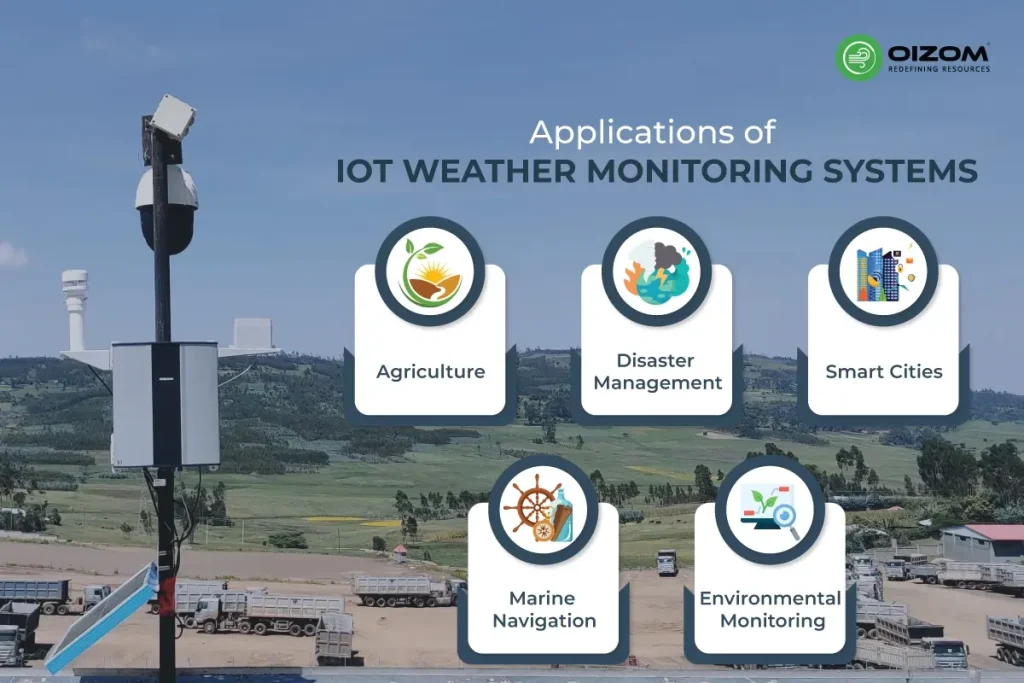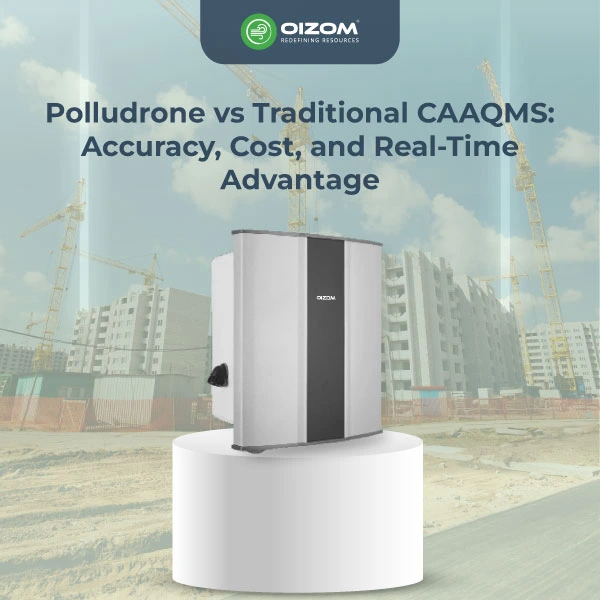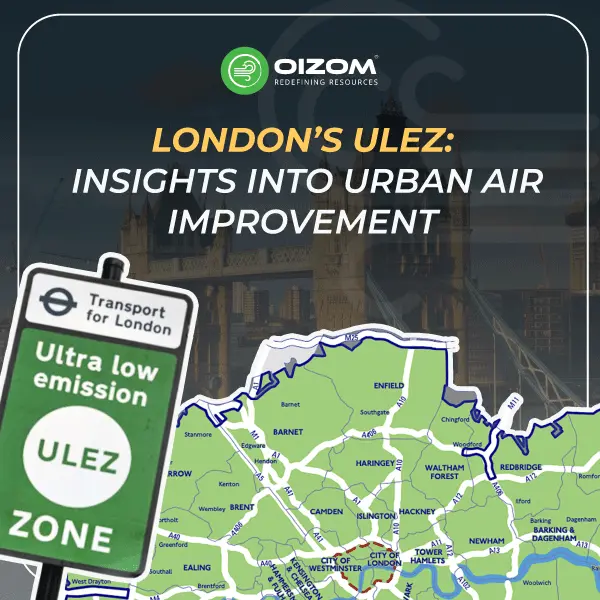10 key Takeaway Points:
- Enhanced Forecasting: IoT weather systems improve forecast accuracy using real-time data from sensors, drones, and other weather monitoring devices.
- Real-time Alerts: Instant weather alerts and cloud-based storage help users stay updated on current conditions and make informed decisions.
- Smart Agriculture: Farmers benefit from accurate weather data to optimize irrigation, protect crops, and boost yields.
- Disaster Management: Early warnings for storms and floods enable timely responses, reducing risks and saving lives.
- Smart Cities: IoT weather monitoring helps cities manage energy, traffic, and resources more efficiently.
- Marine Safety: High-accuracy reports from Oizom Weathercom support safe navigation by providing reliable weather insights.
- Environmental Monitoring: Authorities use weather systems to track air quality, climate change, and pollution levels.
- Solar-powered Operation: Oizom Weathercom runs fully on solar power, ensuring uninterrupted performance in remote areas.
- Automation & Predictive Analytics: IoT systems use historical data for trend analysis and machine learning to improve future forecasts.
- Future Trends: Innovations like low-power sensors, better connectivity, and AI will further enhance IoT weather monitoring systems.
What are IoT weather monitoring systems?: A Simple Guide
Weather forecasting has improved a lot over the years. Not long ago, we had to rely on TV news, radio, or reports from airports to know the weather. Now, it’s as simple as checking your phone. Our ability to understand and predict the weather has grown significantly in the last 50 years. Even though tools like thermometers and barometers have existed since the 18th century, early forecasts were limited by slow communication and a lack of knowledge about weather patterns.
Things changed in the mid-20th century with new technology, allowing scientists to make more accurate predictions. Today, IoT has made weather monitoring even easier. Businesses use IoT-based weather systems to improve forecast accuracy, gathering information from drones, wireless sensors, and other devices. These systems provide real-time weather updates, helping businesses make better choices based on current weather conditions. This blog will delve into the components, benefits, applications, and challenges with future trends in IoT weather monitoring systems.
Components of IoT Weather Monitoring Systems
An IoT weather monitoring device is used to monitor and record the parameters of the atmospheric environment. The outdoor weather monitoring system comprises weather sensors, a data logger, power supply systems, all-weather protection enclosures, data transmission equipment, and cloud-based environmental monitoring platforms. It consists of the following key components:
- Sensors
- Data logger
- data transmission equipment
- Power supply system
- Cloud-based environmental monitoring platform
Sensor: Weather stations include a number of sensors that measure and monitor various meteorological characteristics such as temperature, humidity, barometric pressure, wind speed, wind direction, precipitation, and so on. Each meteorological characteristic is usually assigned to a specific sensor, and the data acquired by the sensor indicates changes in the atmospheric environment.
- Temperature Sensor: A sensor that measures the temperature of the atmosphere.
- Humidity sensor: A device that measures humidity and relative humidity in the atmosphere.
- A barometer sensor measures atmospheric pressure.
- Wind speed sensor: a device that detects wind speed.
- Wind direction sensor: a device that detects the direction of the wind.
- Precipitation sensor: a device that measures rainfall.
- Solar radiation sensors monitor the sun’s ability to emit radiation. They are widely used in meteorology, environmental monitoring, and renewable energy applications.
Data Logger: Modern monitors often include data logging and connectivity features. These features can benefit long-term trend analysis, remote monitoring, and integration with other safety systems.
A weather station’s data logger is a device that receives and stores data collected by sensors. It typically has high precision and stability and can process and record data collected by sensors for later analysis and application.
Data Transmission Equipment: To enable remote monitoring and data sharing, the Outdoor weather station often requires data transmission equipment, such as wireless communication modules or network interfaces, to send collected data to a central database or other relevant systems.
Power Supply System: The weather station requires a stable power supply system to guarantee that sensors and data recorders function properly. The power supply system may comprise solar panels, storage batteries, and other components to fulfill power demands in various environments. It can be utilized in the field for forest fire prevention, mountain flood monitoring, and other applications without a main power source.
Cloud-based environmental monitoring platform: The weather monitoring cloud platform is a web login platform specially developed to provide users with the most convenient service. Imagine a station in the heat of the Sahara or the cold of the Arctic, continuously providing accurate data unhindered by the environment. That’s why Weathercom promises consistent, reliable, and undeterred meteorological monitoring.
Oizom’s Advanced Air Monitoring Software for Professionals, Envizom, is an Environmental visualization and analytics platform for real-time air quality data acquisition. Our Environmental Data Interpretation Engine, powered by Artificial Intelligence and Machine Learning algorithms, provides highly accurate data and actionable insights, empowering users to make well-informed decisions.
Applications of IoT Weather Monitoring Systems

An IoT-based weather monitoring system is useful in a variety of situations. In agriculture, farmers use it to monitor real-time data such as temperature and humidity. This allows them to water their crops fast and protect them from severe weather. Smart cities also use these systems to monitor energy consumption and traffic flow, ensuring that everything functions well regardless of the weather.
In disaster management, these weather stations provide early warning of storms, floods, and other catastrophic phenomena, allowing people to remain safe. The marine sector relies on them to provide weather updates to ensure safe travel. Environmental authorities utilize these systems to monitor air quality and track climate changes, which aids in the fight against climate change.
IoT’s versatility makes it useful in a variety of sectors. Some notable weather monitoring system uses are:
- Agriculture: Farmers can utilize weather stations to track environmental factors, including soil moisture and current temperature. This helps to optimize irrigation schedules and increase crop yields.
- Disaster Management: IoT-based weather systems can forecast extreme weather occurrences such as storms and floods, providing critical warnings for disaster response.
- Smart Cities: Live weather data enables smart cities to better manage their resources. They can improve traffic, energy efficiency, and safety by monitoring the weather today.
- Marine navigation: Safe marine navigation relies heavily on accurate weather data. IoT-based solutions, such as Oizom Weathercom, provide real-time, high-accuracy weather reports to support informed decision-making at sea. With its advanced sensors and calibrated data accuracy, Oizom Weathercom ensures vessels receive reliable updates on wind speed, humidity, precipitation, solar radiation, and temperature, minimizing risks and enabling smooth navigation even in unpredictable weather conditions.
- Environmental Monitoring: Government agencies use weather stations to track changes in climate patterns, pollution levels, and other environmental factors.
Benefits of IoT Weather Monitoring Systems
With the Internet of Things, weather monitoring systems have improved their accuracy, consistency, and speed of operation. That sounds fantastic, but what benefits does this technology provide for businesses? Here are the major advantages:
- Real-time data collection: Businesses may receive weather reports from various locations at any time, thanks to IoT devices and sensors.
- Better accuracy: A weather monitoring system that uses IoT collects data from multiple sources to provide a thorough picture of the weather.
- Broader coverage: Traditional weather monitoring systems typically only monitor conditions at a few weather stations, leaving out other locations. When IoT technology is used, enterprises can cover more ground, including the most remote locations. Imagine a station in the heat of the Sahara or the cold of the Arctic, continuously providing accurate data unhindered by the environment. That’s the Weathercom promises consistent, reliable, and undeterred meteorological monitoring.
- Predictive analysis: IoT-powered weather reporting systems employ previous data.
Challenges IoT Weather Monitoring Systems
Although IoT-based weather monitoring systems provide numerous benefits, they also come with certain challenges.
- Technical complexity: IoT weather stations rely on a significant number of sensors and communication technologies, which are technically demanding and require trained professionals for maintenance and installation.
- Network security issues: Because IOT weather stations must send and process data across a network, there are specific network security risks that must be addressed, as well as the necessity to implement adequate security measures to safeguard data safety.
- Equipment reliability: Because the IOT weather station must operate for an extended period of time, it must be highly reliable and stable, with frequent maintenance and repair required.
- Power Supply: For weather monitoring systems to perform effectively, a continuous power supply is crucial. But this can be tricky in remote or off-grid areas. That’s where Oizom Weathercom stands out. It’s designed to run entirely on solar power, eliminating the need for external power sources. With solar energy driving the system, you can rely on Oizom Weathercom for uninterrupted data collection, whether you’re monitoring in isolated regions, high-altitude locations, or rural areas. No power? No problem, Oizom Weathercom ensures consistent performance wherever it’s needed.
Future Trends in IoT Weather Monitoring
With the growing use of IoT in various industries, including weather monitoring, we may expect increasingly complex and innovative approaches. Some potential developments include:
- Integration with other systems is possible, including IoT-based weather monitoring systems. These systems include smart homes and smart cities, which increase their capabilities. A smart home, for example, may use real-time weather data to modify its temperature settings.
- Machine learning: IoT-based weather monitoring systems may continuously learn from previous data using machine learning techniques. This allows them to develop their forecasting abilities over time.
- In the future, weather monitoring systems will increasingly rely on automation, real-time data collection, and predictive analytics. Furthermore, IoT and AI systems can evaluate enormous amounts of weather data rapidly and efficiently. This will result in more accurate weather forecasts and improved predictions for various weather events. Furthermore, developing low-power sensors and improved connections will make these systems easier to utilize, especially in remote locations.
Conclusion
In conclusion, IoT-based weather monitoring systems not only simplify data collection with their automated, hands-free operation but also unlock valuable insights for users. A key part of these systems is how they keep you updated with real-time data collection and cloud storage, allowing you to check current conditions and receive instant weather alerts. You can also explore historical data to identify trends and gain deeper insights into weather patterns. These systems empower smarter decisions in agriculture, disaster management, and smart city planning, with precise forecasting models ensuring smooth operations and proactive responses to environmental changes.
FAQs
IoT enables real-time data collection, cloud storage, and precise forecasting for better weather insights.
IoT helps farmers make informed decisions by providing accurate weather data for planning and crop management.
IoT offers early warnings and real-time weather updates, enabling faster response to extreme weather events.






